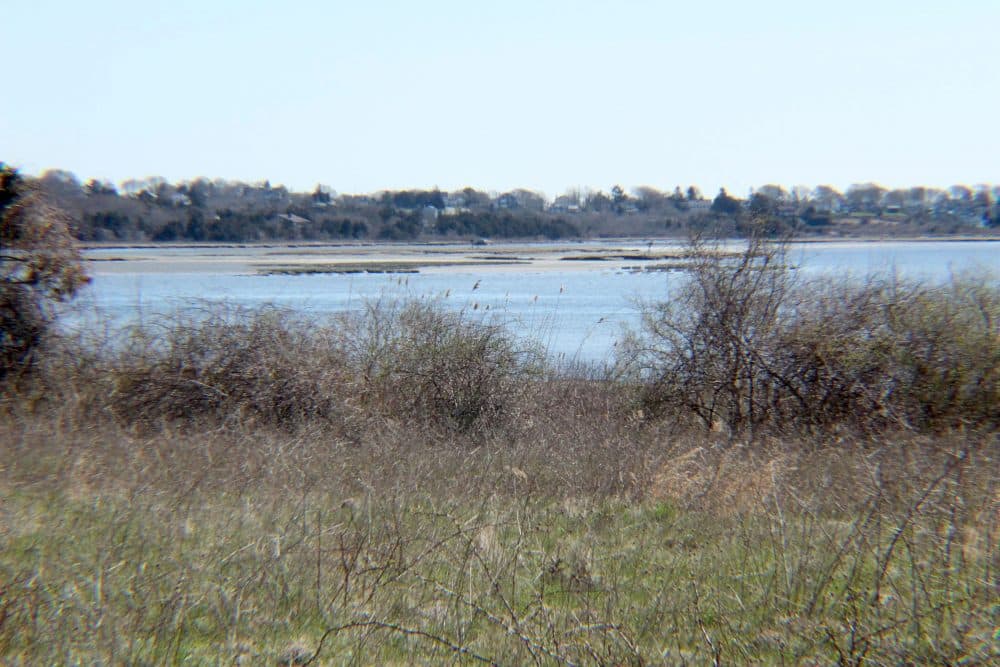Advertisement
Southeastern Mass. Residents Worry Time Is Running Out For Salt Marsh Islands
Resume
Eileen Sheehan lives only a couple hundred feet away from the Westport River. Through the windows in her living room, you can see light from the sun twinkling off the water.
However, Sheehan said these days, it's depressing to look out onto the river because of what's been happening to the salt marsh islands.
About a quarter mile from the river's edge, there are patches of marsh surrounded by sand and mud. Sheehan, who grew up not too far from the house she lives in now, remembers the salt marshes being a lot fuller.
"[The islands are] going so fast that we’re going to talk about marsh as an historical abstraction very soon," Sheehan said.
Salt marshes are coastal wetlands that span the East Coast. They help protect coastal properties from strong waves during storms, absorb carbon from the atmosphere, and serve as nurseries for fish and critical habitat for birds, such as ospreys.
In the Westport River, you can see ospreys nesting on the marshes on top of man-made perches.

However, residents and fishermen, like Jack Reynolds, started noticing these marsh islands, especially in the west branch of the river, rapidly disappearing.
"There were a lot of openings and bare spots and places where it was falling in," Reynolds said.
Reynolds lives in Westport, about 2 miles from the west branch, and used to fish in the river for striped bass for a living. He's also president of the Westport Fishermen's Association, a grassroots environmental group that advocates for the river.
About 10 years ago, after he retired, Reynolds was out on the river in his boat when he noticed the islands deteriorating. He says that made him very concerned.
"The river in its entirety is an organism and if you take any part of an organism, one of the important parts, you take it away, then the whole organism suffers," he said.
Reynolds brought the issue to the Buzzards Bay Coalition, a nonprofit based in New Bedford that works to protect and improve the health of the bay.
The coalition partnered with Reynolds's association and other groups on a study that was released last year. Researchers looked at nearly 80 years worth of aerial images of six of the salt marsh islands in the west branch. They also collected core samples to examine the marsh grass roots.
Rachel Jakuba, the coalition's science director, said the results of the study showed that the anecdotes about the islands were actually scientific facts.
"Over the last 80 years, they’ve lost an average of about half, almost half of their area over that time period, and the loss of marsh has really accelerated in the last 15 years," she said.
The study points to two main reasons for the islands’ degradation: sea level rise and nitrogen pollution.
As sea levels rise, more water inundates the marsh for longer periods of time -- it’s literally drowning the marsh. And too much nitrogen pollution from septic systems, farms and polluted stormwater acts as a fertilizer, which causes the marsh grass to grow a lot, but then the roots weaken and the marsh banks crumble into the water.
Although, there may be other factors behind the disappearance of the marshes, according to the Westport River Watershed Alliance, a local environmental advocacy nonprofit.
The alliance has been regularly monitoring bacteria levels in the river since the 1990s. Roberta Carvalho, science director at the alliance, said the results of the study don't match up with what they know about nitrogen.
"We're seeing the salt marshes falling apart where the nutrient levels are close to the lowest in the entire embayment," Carvalho said.
The alliance will be working on its own study soon to focus on theories that were not the emphasis of the Buzzard Bay Coalition's report, such as erosion from major storms, an overabundance of purple marsh crabs and dredging.
Their study could take a few years to finish.
Carvalho said she understands the urgency felt by residents who want to save the islands, but she said research doesn’t happen overnight.
"Science doesn’t always work that way, you know, you got to take the time, sadly, to justify associated costs and know the economies of what’s going on," Carvalho said.
However, residents, like Sheehan, are tired of waiting for scientists to agree on what’s causing the problem. They want solutions.
“If it were really urgent, we would do something about nitrogen immediately and we’d look for any other causes, but we’re not doing that," Sheehan said. "We’re making another study and another year and maybe this and maybe that until we’re absolutely convinced that we have exactly the right thing, and by that time, we won’t have marshes left."
There are some steps underway to solve the problem.
The Buzzards Bay Coalition is working to replace older septic systems; they’re one cause of nitrogen pollution.
As for addressing sea level rise, researchers in the South Coast are trying to figure out the best way to artificially raise the salt marshes, but the work is in the infant stages.
Scientists don’t yet know how much sediment is enough, and they’re looking to Rhode Island as an example. Salt marsh restoration projects in the Ocean State are already underway.
So what’s in store for these salt marsh islands in the Westport River?
If the degradation continues at the current rate, some scientists estimate the islands could be completely gone in the next 15 to 58 years.
For Sheehan, that overwhelms her with an incredible sense of loss.
"We’ve had literally generations of kids going out there and picking up crabs and exploring," she said. "[It's] not going to be possible for the next generation."
This story was first published by Rhode Island Public Radio, and comes via the New England News Collaborative.
This segment aired on July 6, 2018.